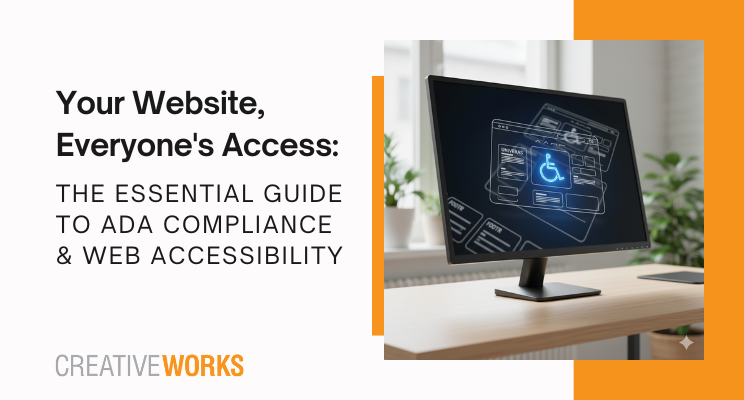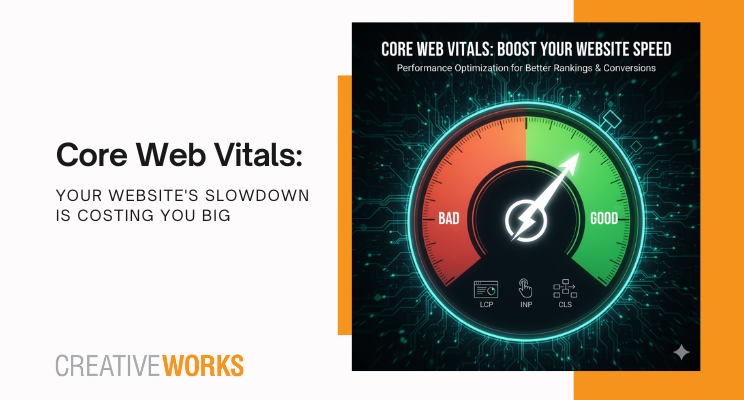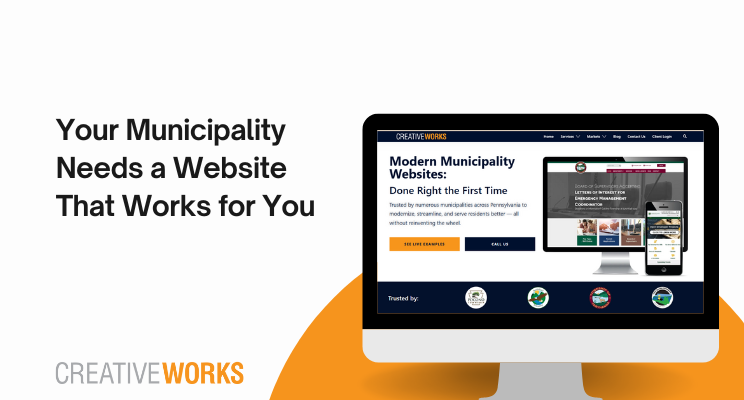A great website does more than just look good—it works seamlessly for everyone who visits. Imagine building a beautiful storefront but forgetting to install a ramp for wheelchair users. You’d be unintentionally excluding a whole segment of potential customers. In the digital world, the same principle applies, and it’s called web accessibility.
For too long, businesses have treated digital accessibility as a technical afterthought or a niche compliance issue. But as of September 2025, that mindset is not just outdated—it’s a significant business risk. The rise in ADA website lawsuits has put a spotlight on the legal necessity of an inclusive website.
However, we believe focusing solely on the legal risks misses the bigger picture. Creating an accessible digital experience is one of the most powerful ways to grow your audience, enhance your SEO, and build a brand that truly lives up to its values.
This guide will demystify ADA compliance and give you a practical roadmap to making your digital presence welcoming for all users, regardless of their abilities.
What Exactly is “Web Accessibility” and “ADA Compliance”?
Let’s clear up some of the jargon. In simple terms, web accessibility is the practice of designing and developing websites and digital tools so that people with disabilities can use them effectively. This includes individuals who are blind or have low vision, are deaf or hard of hearing, have motor impairments, or cognitive disabilities.
So where does the ADA come in?
- The Americans with Disabilities Act (ADA) is a U.S. civil rights law that prohibits discrimination against individuals with disabilities in all areas of public life. While the ADA was signed into law in 1990—before the internet became a household staple—U.S. courts have consistently ruled that websites are “places of public accommodation” and are therefore subject to ADA requirements.
- The Web Content Accessibility Guidelines (WCAG) are the technical standards that have become the globally recognized benchmark for web accessibility. When a court looks at an ADA website requirements case, they almost always reference WCAG. The current standard, WCAG 2.1 (with 2.2 recently published), has three levels of conformance: A (basic), AA (the most common target), and AAA (the highest level). For most businesses, achieving AA conformance is the goal.
It’s Not Just About Lawsuits: The Undeniable Benefits of an Accessible Website
Mitigating legal risk is a compelling reason to act, but the proactive benefits of accessibility are where the real value lies. An inclusive website is simply a better website for everyone.
- Widen Your Audience Reach: Nearly one in four adults in the U.S. has some type of disability. By ignoring accessibility, you could be excluding up to 25% of your potential market. An accessible website opens your doors to this significant and often loyal customer base.
- Supercharge Your SEO: Google’s ranking algorithm and accessibility best practices go hand-in-hand. Search engine bots crawl your site much like a screen reader does. Proper headings, descriptive alt text for images, clear link text, and video transcripts all make your site more understandable to both search engines and assistive technologies, leading to better search performance.
- Enhance User Experience for All: Features designed for accessibility improve the experience for every single visitor. Think about it: high-contrast text is easier for everyone to read in bright sunlight. Captions on videos are perfect for users watching in a noisy environment (or a quiet office). A clear, keyboard-navigable structure benefits power users and those with temporary injuries.
- Strengthen Your Brand Reputation: In 2025, consumers expect brands to be socially responsible. A public commitment to digital accessibility sends a powerful message that your company values inclusivity and cares about all its customers. It’s a brand differentiator that builds trust and loyalty.
Key Areas for Achieving Website Accessibility (Actionable Tips)
Getting started with accessibility doesn’t have to be overwhelming. Focusing on a few key areas can make a massive impact. This is what a professional website accessibility audit would look for:
- Alternative Text for Images: Every informative image needs “alt text”—a short, descriptive sentence that a screen reader can announce to a visually impaired user.
- Keyboard Navigation: Can you navigate your entire website using only the “Tab” key? All links, buttons, and form fields should be accessible and logically ordered without a mouse.
- Sufficient Color Contrast: Text should have a high contrast ratio against its background to be legible for people with low vision or color blindness.
- Descriptive Link Text: Avoid generic link text like “Click Here” or “Learn More.” Instead, use descriptive text that tells the user exactly where the link will take them, such as “Read Our 2025 Marketing Report.”
- Logical Heading Structure: Use proper HTML heading tags (H1, H2, H3) to create a clear and logical outline of your page. This is crucial for screen reader users to understand and navigate the content.
- Captions and Transcripts for Media: All videos should have accurate, synchronized captions, and a full transcript should be available for both video and audio content.
- Accessible Forms: Ensure all form fields have clear, visible labels. Error messages should be specific and easy to understand.
Your Path to an Accessible Digital Presence
The journey to full compliance and accessibility is ongoing, not a one-and-done project. But every journey starts with a single step.
First, don’t panic, but don’t delay. Start by using a free ADA compliance checker or a browser extension to get a high-level overview of your site’s issues. This can help you identify the most critical problems to tackle first.
Next, for a comprehensive understanding of your legal risk and a clear path forward, consider a professional audit. A detailed audit will test your site against WCAG standards and provide a prioritized list of fixes.
CreativeWorks Can Help You Build an Inclusive Digital Future
Navigating the technical and legal requirements of web accessibility can be complex. At CreativeWorks, we believe that an inclusive internet is a better internet, and we embed accessibility into everything we do.
Our team specializes in accessible web design and conducts thorough accessibility audits to identify and fix issues on your existing site. We can help you understand the ADA website requirements and create a digital presence that not only mitigates legal risk but also unlocks new growth opportunities.
Your website is your digital front door. Let’s make sure it’s open to everyone.
Ready to make your website truly welcoming? Contact CreativeWorks today for a complimentary accessibility consultation and to map out your path to compliance.




